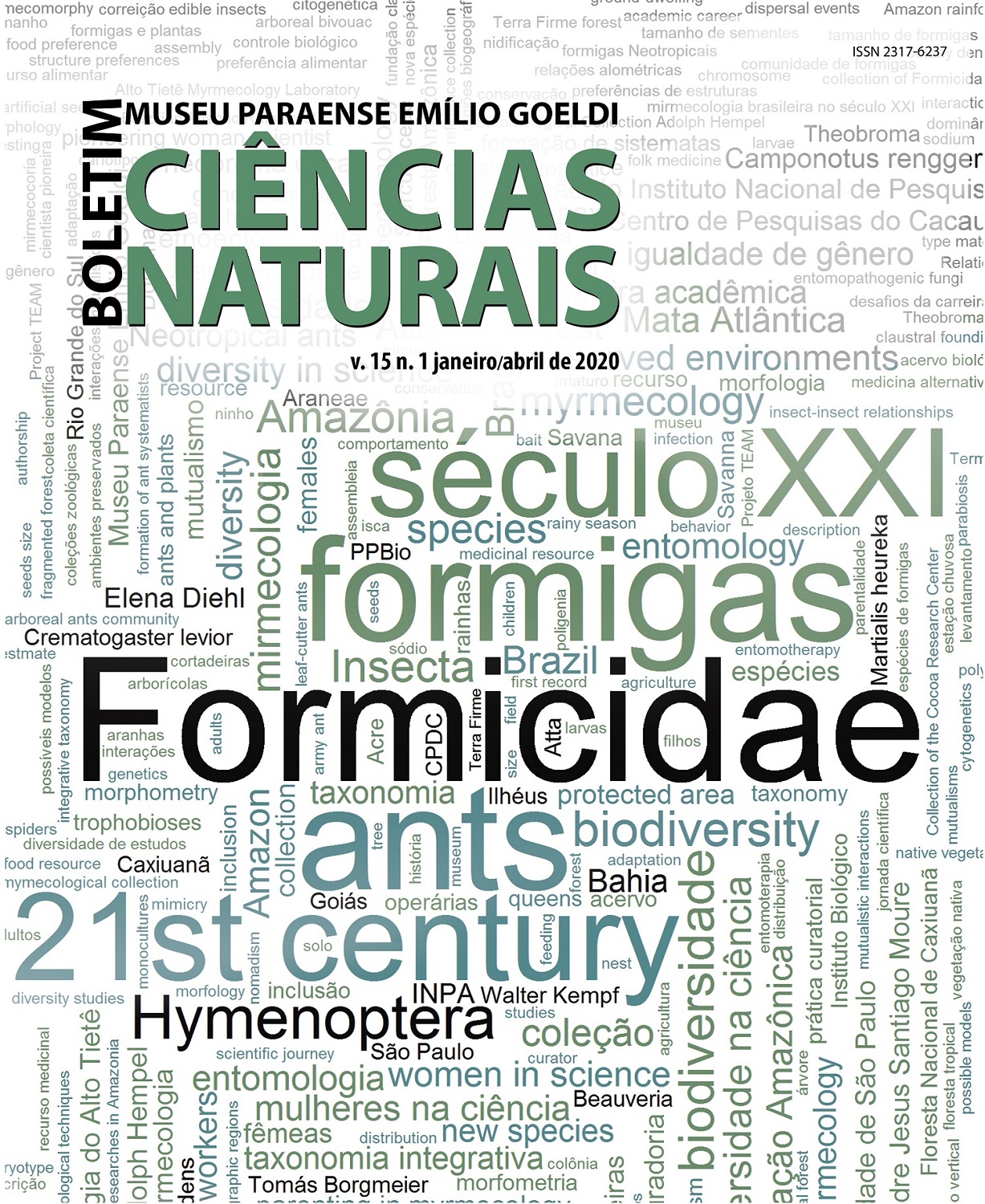Chromosome morphometry of Camponotus renggeri Emery, 1894 (Hymenoptera: Formicidae)
DOI:
https://doi.org/10.46357/bcnaturais.v15i1.243Keywords:
Karyotype, Ants, CytogeneticsAbstract
Both the amount and the morphology of chromosomes are important aspects for the specific genomic organization of each organism. Data show that chromosomal evolution, which happens in higher rates in eusocial insects, tends to decrease the size of chromosomes during genetic diversification. Ants have a high karyotypic plasticity, and the genus Camponotus, one of the most speciose genus among the Formicidae, has little cytogenetic information available regarding its abundance. Therefore, this study aimed to assess morphometrically the karyotype of Camponotus renggeri. The chromosomes were obtained from the brain ganglia of prepupae, following a combination of two existent methodologies. Morphometric analysis of the karyotype revealed chromosomes from 0,31 μm to 1,22 μm, which reflects the chromosomal evolution trend towards considerably small chromosomes.
Downloads
Published
Issue
Section
License
Publication means fully assigning and transferring all copyrights of the manuscript to the journal. The Liability Statement and
Assignment of Copyrights will be enclosed with the notice of acceptance. All the authors must sign the document and return it to the journal.








